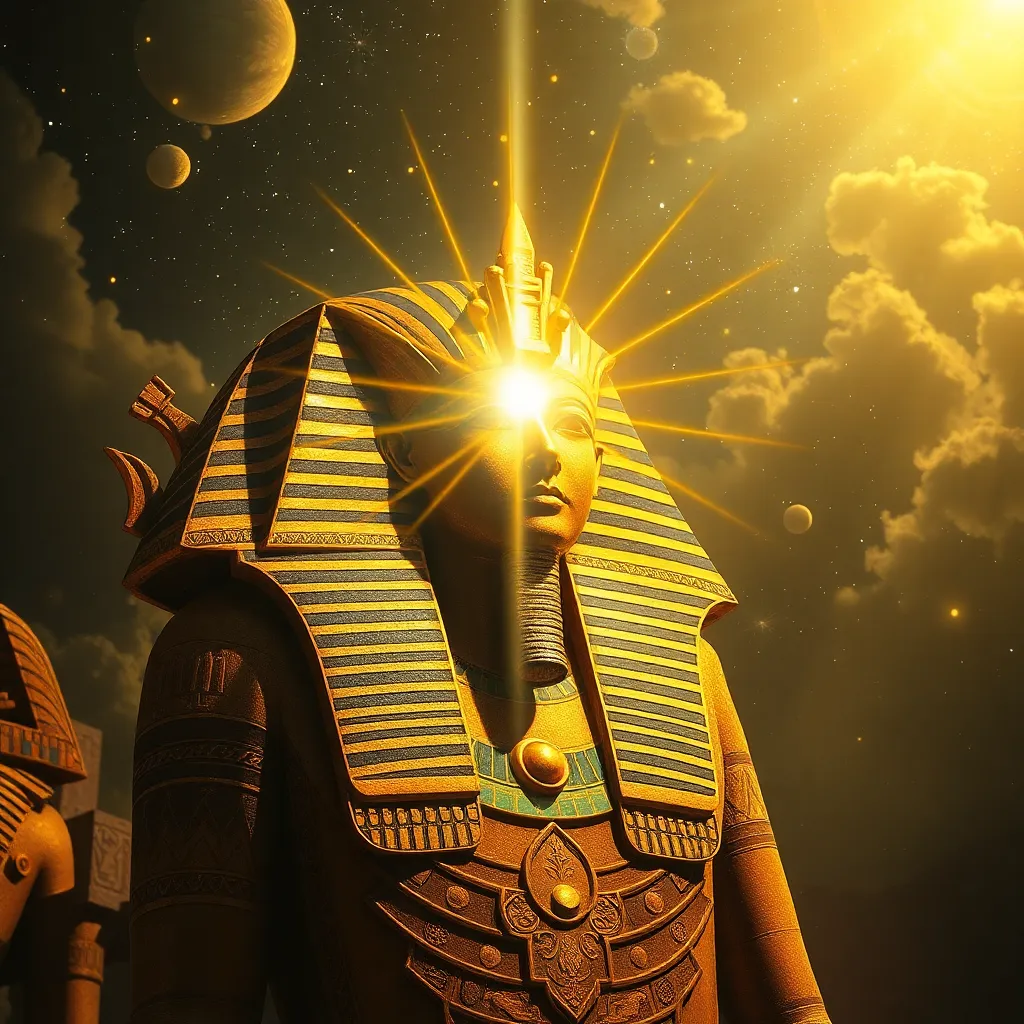The Cosmic Role of the Pharaoh: A Divine Connection
I. Introduction
The Pharaoh was not merely a political leader in ancient Egypt; he was a pivotal figure in a society deeply intertwined with concepts of divinity and cosmic order. The Pharaoh’s significance extended far beyond governance, serving as a bridge between the earthly realm and the divine. This article seeks to explore the multifaceted role of the Pharaoh in ancient Egyptian society, particularly focusing on his cosmic connections and divine responsibilities.
II. Historical Context of the Pharaoh’s Divine Status
The origins of the Pharaoh as a divine ruler can be traced back to the early dynastic periods of Egypt. The title “Pharaoh” itself, meaning “great house,” evolved to encompass the idea of kingship that was both political and sacred.
- Origins: Initially, rulers were seen as intermediaries between the gods and the people, with divine attributes ascribed to them.
- Key Historical Figures: Figures such as Narmer, who unified Upper and Lower Egypt, and later rulers like Ramses II and Tutankhamun, played crucial roles in shaping the divine image of the Pharaoh.
- Evolution: Over the centuries, the perception of the Pharaoh shifted, influenced by various dynasties that adapted the role to accommodate changing political and religious ideologies.
III. The Pharaoh as a Mediator Between Gods and Humanity
As a living god, the Pharaoh held the vital role of mediating between the divine and human realms. This mediation was essential for maintaining Ma’at, the cosmic order that governed the universe.
- Living God: The Pharaoh was revered as the embodiment of Horus, the sky god, and upon death, he was believed to merge with Osiris, the god of the afterlife.
- Rituals and Ceremonies: The Pharaoh performed numerous rituals, including the Sed festival, to rejuvenate his divine essence and reaffirm his connection to the gods.
- Communication of Divine Will: Through decrees and public ceremonies, the Pharaoh communicated the will of the gods to the people, reinforcing his role as their protector and guide.
IV. Cosmic Symbols and Iconography of the Pharaoh
The Pharaoh was surrounded by symbols and iconography that reinforced his divine status and cosmic role.
- Symbols: Key symbols included the Ankh (symbolizing life), the Eye of Horus (protection and royal power), and the Uraeus (the royal cobra, representing sovereignty).
- Royal Regalia: The Pharaoh’s crown, scepters, and other regalia were not only symbols of power but also held cosmic significance, linking the Pharaoh to the divine.
- Art and Architecture: Temples and monuments, such as the Great Pyramid of Giza, were constructed to reflect the Pharaoh’s divine connection, aligning with celestial phenomena and serving as cosmic gateways.
V. The Pharaoh’s Role in the Afterlife and Cosmic Continuity
In ancient Egyptian belief, the afterlife was a continuation of existence, and the Pharaoh played a crucial role in this cosmic cycle.
- Afterlife Beliefs: It was believed that the Pharaoh would journey through the Duat (underworld) and was judged by Osiris. A successful journey ensured the continuation of cosmic order.
- Tombs and Pyramids: The construction of elaborate tombs and pyramids served as gateways to the afterlife, reflecting the Pharaoh’s divine status and ensuring his protection in death.
- Legacy: The Pharaoh’s legacy was essential for maintaining cosmic order. The beliefs surrounding the afterlife ensured that the Pharaoh’s divine essence continued to influence the living.
VI. The Impact of Astronomy and Cosmology on Pharaoh’s Rule
Astronomy and cosmology were integral to ancient Egyptian culture and had a profound impact on the Pharaoh’s rule.
- Celestial Bodies: The Egyptians closely observed celestial bodies, associating them with various gods and cosmic events.
- Astronomical Events: Events such as solstices and equinoxes were significant, influencing agricultural cycles and the timing of religious festivals.
- Alignment of Structures: Temples and pyramids were often aligned with stars and constellations, underscoring the Pharaoh’s connection to the cosmos.
VII. The Relationship Between the Pharaoh and the People
The divine connection of the Pharaoh also shaped his relationship with the populace.
- Responsibilities: The Pharaoh was responsible for maintaining Ma’at, ensuring prosperity, and protecting the people from chaos.
- Public Perception: The belief in the Pharaoh’s divine status fostered loyalty and obedience among the people, as they saw him as a protector and intermediary with the gods.
- Community Rituals: Public rituals and festivals engaged the community in the Pharaoh’s cosmic role, reinforcing their collective identity and connection to the divine.
VIII. Conclusion
The cosmic significance of the Pharaoh in ancient Egypt was profound, intertwining the realms of the divine and the earthly. As a mediator between gods and humanity, the Pharaoh embodied the principles of Ma’at, ensuring harmony and order. His legacy continues to captivate our understanding of ancient Egyptian culture and spirituality, highlighting the intricate connections between leadership, divinity, and the cosmos.




